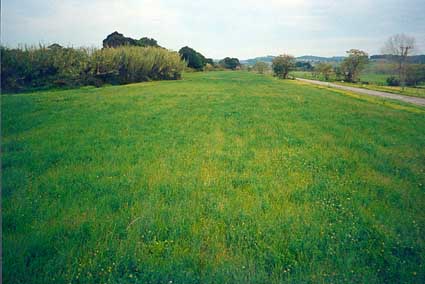The soil found along the Paterson River is an example of a Rudosol soil and is some of the best soil on Tocal because it is deep, holds moisture well and is easy to work.
This is an alluvial Rudosol. Alluvial soils are formed from sediments deposited on land by rivers and streams.
Notice the uniform profile with little change in colour or texture with depth. In other words you can’t find the distinct A, B and C horizons. This type of soil is referred to as a young soil and it hasn’t yet had time to develop distinct horizons.

These alluvial soils are naturally high in phosphorus, so they were cropped because of their high fertility in the days before fertilisers. These were the first soils on Tocal to be used for cropping and they could have been used like that for 100 years before any fertiliser was added. Organic matter levels in these soils are low, partly a reflection of the very young age of the soil, and also because organic matter levels have dramatically declined during the 170-180 years that these soils have been under cultivation.
Manage soils like these to increase soil organic matter. Farming practices such as conservation tillage, retention of crop stubble, crop and pasture rotation, strip cropping and growing of green manure crops are encouraged. These practices will increase soil organic matter content, improve soil structure and manage compaction.
Profile description
- 0cm: Dark grey-brown loam. Abundant plant roots, well drained, pH 4.7
- 40cm: Dark grey-brown loam. Plant roots common, worm channel below 22cm, well drained, pH 5.9
- 85cm: Dark grey-brown loam. Lucerne roots at 85-90cm, well drained, pH 6.1
Tocal newsletter
Want to find out about news, events, courses and publications?

